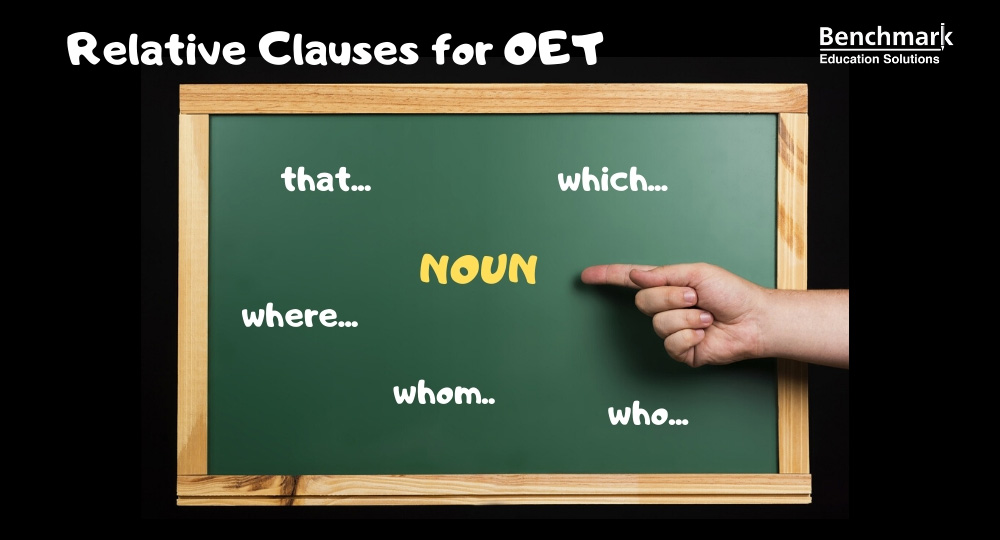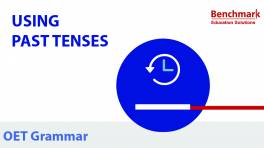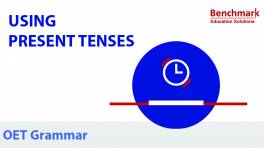
Relative clauses are a feature of the English language that native speakers frequently use to condense more information into shorter sentences. They essentially allow us to say more with fewer words, thereby packing much more information into our language. This is therefore considered a sign of a higher level English user.
In the OET exam, there is plenty of scope to use relative clauses. These clauses combine into one sentence what could otherwise be said in two, generally adding more information to a noun. By using this sort of structure, you can show the examiner that you have a good grasp of English grammar.
Let’s explore the topic of relative clauses and their benefits for OET candidates.
1. What is a relative clause?
A relative clause is a kind of dependent clause that adds information about a noun. It is typically placed right after the noun that it modifies, and will begin with a relative pronoun or relative adverb such as:
- that
- which
- who
- whom
- where
Like any other clause, a relative clause must contain a subject and verb. The relative pronoun can function as the subject of the clause in some cases. Overall, the clause acts as a sort of adjective in that it basically describes or adds detail to one of the nouns in the main clause. (Some people call these “adjective clauses” for that reason.)
Here is an example of a relative clause that could be used in the OET writing sub-test:
- Daniels was admitted due to sharp abdominal pains that began two days earlier.
In this sentence, there are two clauses:
- Daniels was admitted due to sharp abdominal pains
- that began two days earlier
The first clause is the main (or independent) clause. It tells the reader all the vital information and is considered the most important part of the sentence. The second clause is our relative clause, and it gives additional information about one of the nouns (“abdominal pains”). Here, the subject is “that” and the verb is “began.”
The first clause can stand alone without the second, but the second cannot exist without the first one. Nonetheless, the information that has been added is essential to the sentence. Let’s look at another relative clause. This time, the information contain is not essential. Note the different punctuation.
- Daniels was given painkillers for her abdominal pains, which began two days earlier.
This time, there is a comma between the two clauses. The reason for this is that the information in the relative clause is now less important than in the first sentence. Some people call these “defining” and “non-defining” relative clauses. That’s because a defining clause gives really important information and the sentence wouldn’t make much sense without it, while the non-defining information just adds extra information that may be interesting.
Let’s look at another example. Which of these sentences is correct?
- The patient who was admitted for a broken ankle was sent home on crutches.
- The patient, who was admitted for a broken ankle, was sent home on crutches.
Both of these sentences look the same, although you can see that there is a slight difference in the punctuation. Both of these sentences could be correct, but it depends on the context. In the first case, we have an essential relative clause. The main clause (“The patient was sent home on crutches.”) does not really make sense without the information about the broken ankle. However, if the patient was already known to the speaker and listener/reader, then it would be possible to write it like #2. In this case, the information is extra. It implies that both people know who the patient was. In most cases, for OET writing, you would need to use the first style, but sometimes the second style is also acceptable.
2. Relative clauses and the OET writing sub-test
As you have seen above, relative clauses allow us to write with great flexibility and accuracy. They can help us to take important information and put it together logically, and it can even give subtle signals to the reader about the importance of the information given.
For OET candidates, it can be useful to employ relative clauses so as to avoid the trap of using overly simplistic English sentence structures. When you are reading the case notes, you will often encounter short, simple phrases that you have to translate into proper English grammar. The easy thing to do is to write them as simple sentences. However, a more advanced technique involves making them into relative clauses.
Look at these sentences:
- The patient was prescribed atorvastatin. She takes 200mg daily.
This could be expressed in a much more efficient way:
- The patient was prescribed 200mg of atorvastatin, which she takes daily.
In this case, we have referred to the drug by “which” (a relative pronoun). It is the object of the sentence, while “she” is the subject and “takes” is the verb. As this information is useful but not essential to understanding the previous clause, it is separated from the rest of the sentence by a comma.
Altogether, this structure is very easy to use in OET, and can even be found in the first line of your letter:
- I am writing to refer Mr. Thompson, who has recently broken his collar bone.
By introducing your patient with a relative clause, you are effectively conveying information in concise manner. This is really important for OET, as the examiner will be looking to see that you get your main idea across quickly and clearly, and do so with the appropriate grammar.







